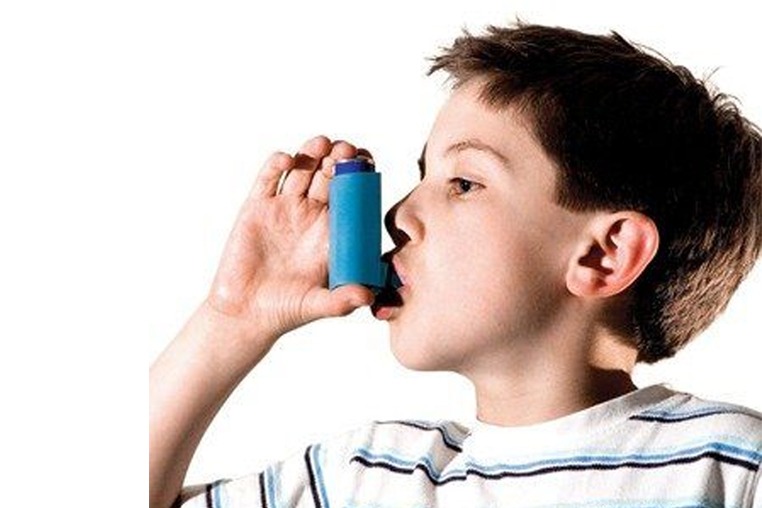Each ragged breath burned as I wheezed and strained to fill my lungs.
It was the final quarter of a particularly intense netball match, and to say I was struggling is a massive understatement.
I assumed I was unfit, but my teammate — who also happened to be a GP — thought otherwise.
It turned out I had exercise-induced bronchoconstriction or EIB, a condition that appears with intense exercise and produces asthma-like symptoms, even after you have stopped the activity.
The diagnosis was a huge surprise to me. I don’t have asthma, nor do I have a family history of respiratory issues.
But I am far from alone, said Norbert Berend, head of respiratory research at George Institute for Global Health in Sydney.
Up to half of competitive athletes get it. And EIB is super common in people with asthma, affecting about 90 per cent, Professor Berend added.
EIB is not to be confused with general breathlessness, either. A feature of EIB is the timing of the symptoms, which can peak after you finish exercising.
That made sense in my netball match. I had sat the third quarter out, so when I came on for the final quarter, my wheezing and chest tightness had well and truly kicked in.
It’s dry air, not cold, that triggers EIB
As you’re reading this, you’re probably breathing through your nose.
Even if it’s chilly outside, your nasal passages warm up and humidify air you inhale and filter out a lot of irritants such as pollen.
But start exercising hard, and you begin to breathe through your mouth.
You might be sucking in more oxygen, but you lose the humidifying benefits of nose breathing, said Mehra Haghi, a respiratory pharmaceutical scientist at University of Technology Sydney.
As dry air whooshes down into your lungs and out again, it whisks water away from cells lining your lower airways.
Those cells release inflammatory molecules. The smooth muscle wrapping around your airways constricts, like a belt being cinched in.
“That’s when you feel the tightness and the feeling of being unable to breathe,” Dr Haghi said.
And other environmental triggers, such as pollution and pollen, can intensify EIB.
I tend to notice symptoms more in cold weather, but that’s not because of the temperature: it’s because cold air can’t hold as much water as warm air.
Far more winter Olympians have the condition compared to their summer counterparts.
It seems our furry friends get EIB of sorts, too. A 2002 study of “canine winter athletes” found more airway inflammation in elite Alaskan racing sled dogs than sedentary pooches.
Diagnosing EIB can be straightforward
If you suspect you have EIB, get yourself to a GP. You might also need to see a specialist.
While there’s no questionnaire or tool to diagnose the condition, Professor Berend said the first thing to do is to rule out asthma.
For some people, like me, diagnosing EIB is pretty straightforward.
For others, though, it’s not so clear cut.
“Under those circumstances you do tests,” Professor Berend said.
“A common one is you blow in a device as hard as you can, which registers your peak flow.
“Classically, with EIB, immediately after exercise you see a drop. And if that drop is more than 10 per cent, then you have EIB.”
Some people have this drop in peak flow without any symptoms, so while they technically have EIB, it doesn’t make them feel unwell.
“Of course there are other people who feel bad, but that’s not because they have EIB — it’s because they’re not fit,” Professor Berend said.
“And there are other causes of feeling breathless when you exercise, like heart disease and any number of lung diseases.”
Still, EIB is generally under-diagnosed or mis-diagnosed.
And because EIB can feel awful — believe me, I know — those who unknowingly have the condition might simply stop exercising, Professor Berend said.
Prevention is treatment
There are a few things you can do to stop or alleviate EIB symptoms.
If you can’t exercise indoors or in a more humid climate, warm up as much as possible before exercise, Dr Haghi said.
You can also try to build up your cardiovascular fitness so you can breathe through your nose instead of your mouth.
There’s limited evidence that EIB can be helped if you eat less sodium, or up your intake of fish oil or vitamin C, but she added, “these are small studies, and certainly not conclusive”.
In terms of pharmaceuticals, a short acting beta agonist can be used to relax the bands of smooth muscle that encircle your airways. You may know a beta agonist by its brand name, Ventolin.
It will usually do the trick for people who don’t have asthma, Professor Berend said.
“The vast majority get good relief from taking the Ventolin, but you have to take it before the exercise.”
You can become used to the drug’s effects, though, so it should only be used sparingly: three or four times a week is fine.
For those with asthma, even though almost all will have some degree of EIB, they may not feel it if their asthma is well controlled, Professor Berend said.
“So if it happens in asthmatics, it’s usually a sign that their asthma’s not well controlled and needs additional treatment.”
In my case, I bought a puffer and I have a couple of puffs about 15 minutes before sport or exercise. On a long run, I take it with me, and try to breathe through my nose.
I’ve started swimming more too. Even though I still end up breathing hard, the air I inhale is warmer and more humid, thanks to the pool water.
And my lungs and airways are definitely feeling better for it.
Book a first aid course today at www.canberrafirstaid.com





